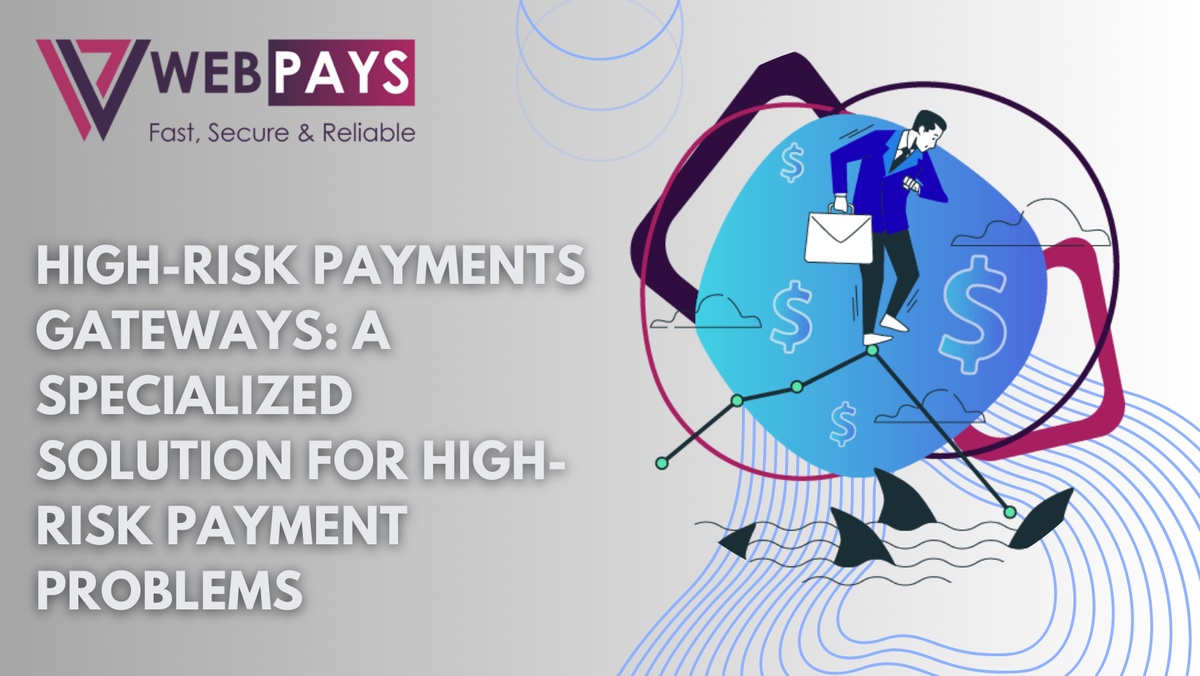You may be wondering what high-risk payments are. In this blog post, we will shed light on high-risk payments, their problems, and their solutions in depth.
What are High-Risk Payments?
High-risk payments are the payments received from your high-risk business operations. You receive payment when you sell your high-risk industry's goods or services. These financial transactions are considered to carry a higher level of risk for the parties involved. These transactions often involve factors that make it more likely for the payment to result in fraud, disputes, or financial losses. High-risk payments are typically associated with specific industries, business models, or circumstances that are more susceptible to certain risks. Usually, transactions conducted in businesses, such as online gaming, gambling, casinos, poker, sports betting, adult entertainment, sex toys, subscription-based services, forex, tobacco, e-cigarette, tech support, offshore businesses, etc., are the high-risk payments. To mitigate the fraud and chargeback risk and provide customers with a smooth and seamless payment experience, these businesses require specialized high risk payment gateway solutions and similar other associated solutions, such as high-risk merchant accounts or industry-specific merchant accounts.
The Problems
High-risk payments can present several issues and challenges for businesses and financial institutions due to the elevated level of risk associated with these transactions. Some of the primary issues with high-risk payments include:
i. Higher Chargeback Rates:
High-risk transactions are more likely to result in chargebacks, where customers dispute a payment with their credit card issuer or payment provider. This can lead to financial losses for the seller, as they may have to refund the payment and incur chargeback fees.
ii. Increased Fraud Risk:
High-risk payments are often targeted by fraudsters who use stolen credit card information or engage in other fraudulent activities.
iii. Regulatory Compliance Challenges:
Many high-risk industries are subject to strict regulations and compliance requirements, such as Know Your Customer (KYC) and Anti-Money Laundering (AML) rules.
iv. Payment Processing Difficulty:
High-risk businesses may struggle to find payment processors willing to work with them.
v. Reputation Damage:
Engaging in high-risk payments can harm a business's reputation, especially if it is associated with fraud or unethical practices.
vi. Financial Instability:
Businesses in high-risk industries may experience financial instability due to the unpredictability of chargebacks, disputes, and regulatory issues.
vii. Increased Operational Costs:
Implementing stringent fraud prevention measures, compliance processes, and customer support services to manage high-risk payments can increase operational costs for businesses.
viii. Limited Access to Traditional Banking Services:
Some high-risk businesses may have difficulty accessing traditional banking services, including business loans, merchant accounts, and credit lines, which can hinder their growth and operational capabilities.
ix. Market Volatility:
In industries such as cryptocurrency and forex trading, market volatility can lead to significant financial losses for both businesses and customers.
x. Legal and Regulatory Risks:
High-risk businesses may face legal challenges, fines, or even shutdowns if they do not comply with industry-specific regulations or engage in illegal activities.
These are some well-known issues high-risk payments carry with them. To mitigate these risks, let's see the solution in the next paragraph.
The Solutions
We understood the problems first; now, let’s see the solutions. To eradicate the problems associated with high-risk businesses and their payment systems, companies need specialized solutions. These specialized solutions are crafted with top-level security measures and other relevant tools to eliminate potential risks. High-risk business payment gateways, high-risk merchant accounts, credit card processing, fraud and chargeback prevention tools, and risk management systems are some of the most demanding high-risk payment solutions. In this blog, we will focus on high-risk payment gateways, but in some other blogs, we will deeply cover all the high-risk payment solutions individually. So, to make yourself more informed about your business financial solutions, make WebPays your financial associate.
Moreover, businesses themselves can also mitigate the risks associated with high-risk payments by implementing various security measures. They can implement stricter verification processes, monitor transactions more closely, and use specialized payment processing services that are equipped to handle high-risk industries. Additionally, they may set aside reserves to cover potential chargebacks and disputes. Regulatory compliance is also crucial in many high-risk industries to avoid legal issues.
High-Risk Payment Gateways Help Mitigate Risk
Payment gateways for high-risk play a crucial role in mitigating the risk associated with high-risk payments. By processing high-risk payments securely, they empower businesses to accept each and every payment from customers. Here's how high risk business payment gateway help mitigate risk:
(a) Risk Assessment and Underwriting:
High-risk payment gateways typically have sophisticated risk assessment and underwriting processes. They carefully evaluate businesses before onboarding them, assessing factors such as industry type, business model, creditworthiness, and past chargeback history. By identifying high-risk businesses upfront, they can set appropriate risk mitigation measures.
(b) Fraud Detection and Prevention:
High-risk payment gateways use advanced fraud detection tools and technologies to monitor transactions in real-time. They employ machine learning algorithms and AI-driven solutions to detect unusual patterns or suspicious activities that may indicate fraud. This helps prevent fraudulent transactions from being processed.
(c) Enhanced Security Measures:
Payment gateways for high-risk often provide enhanced security features, including tokenization, encryption, 3D secure authentication, and other state-of-the-art secure payment processing protocols. These measures protect sensitive customer and payment data, reducing the risk of data breaches and fraud. Moreover, they comply with all international safety regulations, such as PCI-DSS and GDPR.
(d) Chargeback Management:
High-risk businesses are more susceptible to chargebacks, which can result from customer disputes, fraud, or other issues. Payment gateways specializing in high-risk industries offer robust chargeback management services. They help merchants track, dispute, and manage chargebacks effectively to minimize their financial impact.
(e) Customized Risk Mitigation:
High-risk payment gateways tailor their services to meet the unique needs of high-risk businesses. They may offer risk-scoring systems, AVS & CVV checkers, or transaction limits that are specific to the industry or merchant's risk profile.
(f) Monitoring and Reporting:
These gateways give merchants a powerful dashboard with access to detailed transaction data, reporting, and analytics. This enables businesses to monitor their payment activities, track trends, and identify potential issues proactively.
(g) Relationships with High-Risk Banks:
High-risk payment gateways often have established relationships with banks and financial institutions that are willing to work with high-risk businesses. This ensures that merchants have access to reliable banking partners.
(h) Continual Risk Assessment:
High-risk payment gateways continually assess and adapt their risk mitigation strategies to stay ahead of emerging threats and changing regulatory environments. They may adjust their risk models and fraud prevention techniques as needed.
Besides these solutions, a high-risk payment gateway provides hundreds of other benefits to the merchants. They help them expand their international reach, they help grow their customer base, and ultimately help them boost their revenue.
Conclusion
Accepting high-risk payments from customers is not an option but an obligation for high-risk businesses. For high-risk businesses, high risk payment processing became a lifeline. They provide high-risk payment solutions, such as high-risk payment gateway and merchant accounts for businesses involved in elevated-risk industries. We learned in the blog how payment gateway helps mitigate risk. Choosing an ideal high-risk payment gateway provider that can align with your business and offer you a smooth and seamless payment processing experience is also important.
One such provider is WebPays, a leading high risk international merchant account provider. WebPays has extensive experience working with high-risk industries and eliminating the risk associated with high-risk payments. They offer top-notch security, advanced AI-based fraud and chargeback prevention tools, and a risk management system so that you can accept each and every payment from global customers. WebPays offers its services not only to regulated merchants but also to unregulated industries. So, if your business is considered high-risk and you are suffering from problems, then embrace WebPays for the solutions. Apply now.


No comments yet